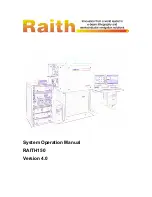
13
3 Mounting
SHLD1 • Source holder
62092-EN-190704
3 Mounting
3.1 General instructions
•
For mounting of SHLD1 you need a special handling permit.
•
Mounting may only be carried out by authorized, qualified person-
nel who are monitored for radiation exposure according to local
laws or the handling permit. Take note of the specifications in the
handling permit. Also take the local conditions into account.
•
Carry out all work within the shortest possible time and at the larg-
est possible distance. Provide suitable shielding
•
Avoid risk to other persons by taking suitable measures (e.g.
safety fence, etc.)
•
All mounting and dismounting work must only carried out with the
switch in position OFF, secured with a lock.
•
Keep the weight of the source holder in mind when mounting (up
to 100 kg or 220 lbs)
•
Depending on the version, the centre of gravity of SHLD1 can vary.
Keep this in mind during crane transport on the lug
Mounting with a crane
Warning:
Check the hoisting equipment for sufficient lifting capacity, approx.
110 kg (244 lbs).
Persons must never stand beneath the loads.
The source holder is screwed onto a transport board. Loosen the
screws and lift the source holder from the transport board. For this
purpose you have to use the lug of the source holder.
Use a suitable lifting tackle (shackle, snap hook, etc.) to fasten the
source holder to the crane hook. Keep in mind that the source holder
will tilt sidewards while lifting.
Versions with manual switchover
Protect the source holder against moisture and hence against cor-
rosion. If the source holder is exposed directly to the elements, you
should cover it with a roof or a suitable protective bonnet.
To maintain the housing protection, make sure that the housing lid is
closed during operation and locked, if necessary.
Make sure that the degree of contamination specified in chapter
"
Technical data
" meets the existing ambient conditions.
Version with position switches
Use the recommended cables (see chapter "
Connecting to power
supply
") and tighten the cable gland.
You can give your instrument additional protection against moisture
penetration by leading the connection cable downward in front of the
cable gland. Rain and condensation water can thus drain off. This
applies mainly to outdoor mounting as well as installation in areas
where high humidity is expected (e.g. through cleaning processes) or
on cooled or heated vessels.
General information
Moisture














































